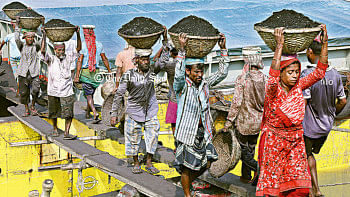Rizia Rahman’s devotion to art

Beginning its journey after 1947, Bangladeshi literature created a different wave in Bangla literature—Rizia Rahman was one of the most significant writers from that wave.
Fiction was her mainstay, with a number of short stories and novels to her credit. The settings of her fictional work have expanded the horizon of our literature. Her skills and artistic expressions have established her as an exemplary writer.
Agni Shwakkhora was published in 1967. The way she artistically explored the meaning and multidimensionality of life in her stories caught everyone's attention; we all realised how brilliant she was as a writer and that her work would take her to great heights. Rizia Rahman's first collection of short stories created a stir in literary circles. Martyred Professor Munier Chowdhury praised her stories, Professor Abdul Hye welcomed the young writer of his time. With blessings from veterans in the field, Rizia Rahman began her journey as a writer. I first met her on the premises of Bangla Academy. She often visited the academy, a meeting place for writers who went there even if there was no programme or event. While at the academy, we had great addas where we would often discuss her writing. Her Rokter Okkhor, published in "Bichitra" magazine, was widely acclaimed back in the day. The story is about a woman who, tortured during the Liberation War, takes up sex work for a living. In answer to our questions, Rizia Rahman would explain her position readily and say, if the abstract articulation of a time does not survive through art, that particular time will be lost forever. It is not possible that people will know about or remember a time only from history books; that is not how it works. All readers are not the same—history books and research journals do not have the same impact on all readers. If we choose to portray an era through fiction to readers, then it becomes our responsibility to explore that time through many different lenses.
In the novel Akal Chirokal, written about the Santal communities, she describes their suffering as well as their revolt. She shows how the Santals had fought for their rights without compromising on the question of identity. I was impressed with her nuanced exploration of Santal life as well as that of the tea gardens.
She never compromised when it came to art. And that is how readers will remember her—that she remained true to herself in writing boldly. There was nothing you could fault her on. She approached each topic with the clarity and sobriety it deserved. In her books, she intentionally created worlds that were driven by her own social consciousness. Several of her novels were set in different regions of Bangladesh and her descriptions of local life show how she infused her consciousness and experience in her creations.
The ability to turn thoughts and subjects into art is an extraordinary skill, of which Rizia Rahman was a master. She dedicated her life to it. Her novel, Bong Theke Bangla, published in 1987, is a remarkable work of Bangla fiction. It is a fine example of interpreting history in a new context and deconstructing life as we know it. Another remarkable novel, Shilay Shilay Aagun, was published two years later. In it, too, she went on to create a world full of fascinating stories and interpretations. I also remember another of her novels, Aabe Rouwa, which is set in the days when our Muslin fabric was world famous. It revolves around the production of muslin, the market economy around it and muslin weavers' struggle to exist. In fact, each of Rizia Rahman's fiction bears the stamp of an intellectual mind.
To us, her death is not only an occasion for mourning; it is a deeply painful reminder that we have lost such a writer. If she had been amongst us for longer, our literature would have been further enriched.
I pay my deepest respect to her memories.
Rizia Apa was born in 1939. We had a deep and meaningful friendship. There was a time when we would meet often and reflect on books and other subjects. Looking back at her work, I am reminded of how enormous her contribution has been to our literature. She not only nurtured her own creativity but also took our literature to bigger heights. There was barely any difference between her work, personality and philosophy of life. She was totally devoted to her craft. Her short stories, novels and other writing make her one of the major writers of Bangladeshi literature. She is someone who our next generations will follow when taking Bangla literature forward. Rizia Rahman will live forever in the minds of her readers.
(Translated by anubad.net)
Selina Hossain is a prominent Bangladeshi novelist. Her major works include Hangor Nodi Grenade and Poka Makorer Ghor Bosoti.


 For all latest news, follow The Daily Star's Google News channel.
For all latest news, follow The Daily Star's Google News channel. 



Comments